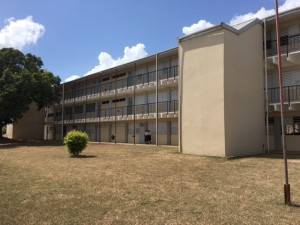Student Supervision and Space Management – Valuable Tools to Prevent Problems in Schools “Fight Club”
A lot has happened in the past month in school safety, including a situation that received a fair amount of national press coverage a few weeks back. Media accounts allege that students at Nevada Valley Union High School in Grass Valley, California had been participating in what reporters characterized as a “fight club” for several months. Allegedly, groups of students would enter an unsecured locker room in the basement of the school, don boxing gloves, and fight one another. Video segments shown by news outlets depict students boxing while a number of other students observe.
Caution about video footage
According to reporters, parents are upset that this activity has apparently been going on without detection by staff at the school. I am always cautious about opining on video segments without supportive background information. I testified in a federal civil action in a case involving an independent boarding school a few years ago. Videos of students sparring in their dormitory rooms depicted students punching one another in the stomach while other students looked on. The video footage depicted by the news media initially looked horrific. However, our video crew was able to locate the original unedited footage on YouTube which revealed that the videos were taken widely out of context and were likely posted as an effort to force the school to settle the suit. This is but one example demonstrating that some videos that are aired on the news are not accurate depictions.
Student supervision and space management
With this caution in mind, I do not have enough information to accurately evaluate how bad the situations depicted in the “fight club” video clips really are. At the same time, I have a different take on the incident than many people do. While media accounts focused on the need for students to be informed of the dangers of hitting one another without proper protective headgear, I immediately questioned whether a lack of proper student supervision and space management should be more of a
focus. The ability of students to gain access to a large space such as a locker room and to repeatedly engage in inappropriate activities has implications far beyond those that are upsetting to many people who have viewed the video clips. Robberies, sexual assaults and deaths have occurred in smaller spaces where adult supervision was lacking. The concept of space management involves a thoughtful effort to keep certain types of areas in K12 schools secured when they are not occupied by an adult who can supervise and prevent incidents like these.
Case in point – the “sex room” case
I recently finished a civil action in Illinois that involved two high school students who repeatedly engaged in group sex with several young women who were special needs students functioning at the third grade level. During the criminal investigation and successful prosecution of the two young men, the victims repeatedly referred to the space where the incidents occurred as the “sex room.” The district spent one million dollars defending against the civil action but once they passed this self-insurance limit, their insurance carrier immediately offered plaintiffs’ counsel a settlement. Based on what I saw in the case file, it would have been extremely risky for this case to go to a jury trial.
We see so many tragic cases in schools where inadequate student supervision and/or improper space management are a major factor. Providing clear guidance for staff on simple but effective student supervision practices and the importance of keeping unoccupied spaces locked can help to prevent many school safety incidents. Effective leadership to make these simple but effective practices consistent realities in a school is one of the best ways to stay out of the news and out of court by preventing a myriad of negative situations.
Link to original news story:
http://www.foxnews.com/us/2016/02/28/california-hs-probes-video-purported-student-fight-club.html?



